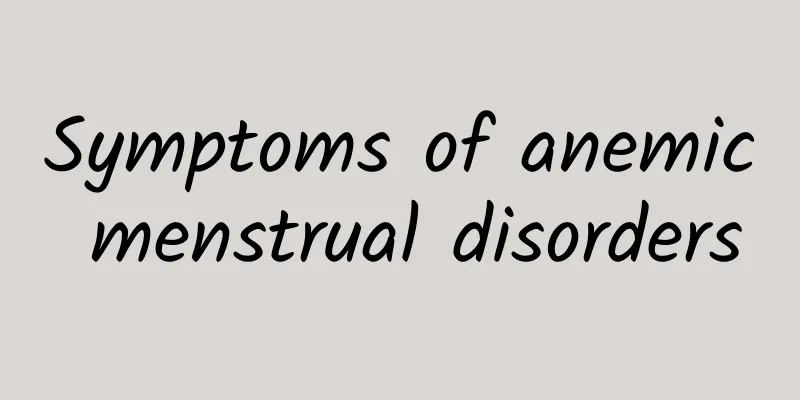Symptoms of anemic menstrual disorders

|
Symptoms of anemic menstrual disorders: Symptoms of irregular menstruation include premature menstruation, menstrual cramps, irregular menstruation, prolonged menstruation, uterine dysfunction, amenorrhea, dysmenorrhea, early menstrual tension syndrome, etc. Symptoms of irregular menstruation: 1. Early menstruation, menstrual period refers to the shortening of the menstrual cycle. This is a typical symptom of irregular menstruation, less than 21 days, more than 2 consecutive months, it is a biphasic basic body temperature ovulation dysfunction, the follicular phase is short, only 7-8 days, or the luteal phase is shorter than 10 days, or the body temperature rises less than 0.5°C. 2. After the menstruation is delayed for more than 7 days, including 40 to 50 days, and two consecutive menstrual cycles. During the ovulation period, the basic body temperature is biphasic, but the follicular phase is long, the high temperature phase is low, there is no ovulation, and the body temperature is in the basic phase. 3. Prolonged menstruation Normal menstrual cycle, prolonged menstruation, menstrual cycle more than 7 days, even 2 weeks before the end. Patients with inflammation usually have abdominal pain, aggravated menstruation, usually more leucorrhea, yellow or yellow-white, thick texture, delicious taste. Incomplete corpus luteum atrophy accompanied by menstrual volume; after normal menstruation, the endometrial repair is prolonged and there is still a small amount of persistent vaginal bleeding. 4. Irregular menstruation has been postponed or delayed, with a cycle of less than 21 or 35 days. Iron supplementation is the most basic method for treating iron deficiency anemia. Oral iron has obvious symptoms. It is best to treat it through diet. Animals rich in iron include liver and kidney, followed by lean meat, egg yolk, chicken, fish, shrimp and beans. Iron is found in green leafy vegetables, spinach, celery, rapeseed, lily and tomato. Fruits contain more apricots, peaches, plums, raisins, red dates, cherries, etc. |
<<: Is there menopause in your 30s?
>>: What tests are needed for endometriosis?
Recommend
Does microwave electrocautery for cervical erosion affect conception?
Does microwave electrocautery for cervical erosio...
What are the hazards of having an abortion for the first time? The first abortion for a woman will cause 3 harms to the body
When talking about abortion, people will feel hor...
How much does an abortion usually cost?
Everyone should be familiar with the word abortio...
What is pelvic connective tissue inflammation?
The most common type of pelvic inflammatory disea...
What are the symptoms of female cervical erosion? What are the causes of female cervical erosion?
In today's society, more and more women are s...
Beware of the dangers of hyperprolactinemia
Do you know about high prolactin? Experts point o...
Fat guy becomes strong man Du Wenze: 30% exercise and 70% diet
Hong Kong's popular comedian Chapman To has s...
Can right ovarian polycystic disease be cured?
Right ovarian polycystic disease is now common in...
What can I eat to eliminate uterine fibroids? What are the facial manifestations of people with uterine fibroids?
What can I eat to get rid of uterine fibroids? Th...
Nursing methods for patients with congenital absence of vagina
Congenital absence of vagina not only threatens o...
What are the symptoms of uterine fibroids? Symptoms of uterine fibroids in different parts
The symptoms of uterine fibroids are closely rela...
What should I do if my vaginal discharge is like tofu dregs and contains blood? Check first and then treat
If a woman's vaginal discharge is like tofu d...
How many days of pregnancy does it take to do a painless abortion?
Painless abortion is usually performed between 6 ...
How to cure menstrual disorders after abortion
How to cure menstrual disorders after abortion? S...
Can I take Guipi Pills for amenorrhea in adolescence?
Adolescent amenorrhea can take Guipi Pills in mod...









